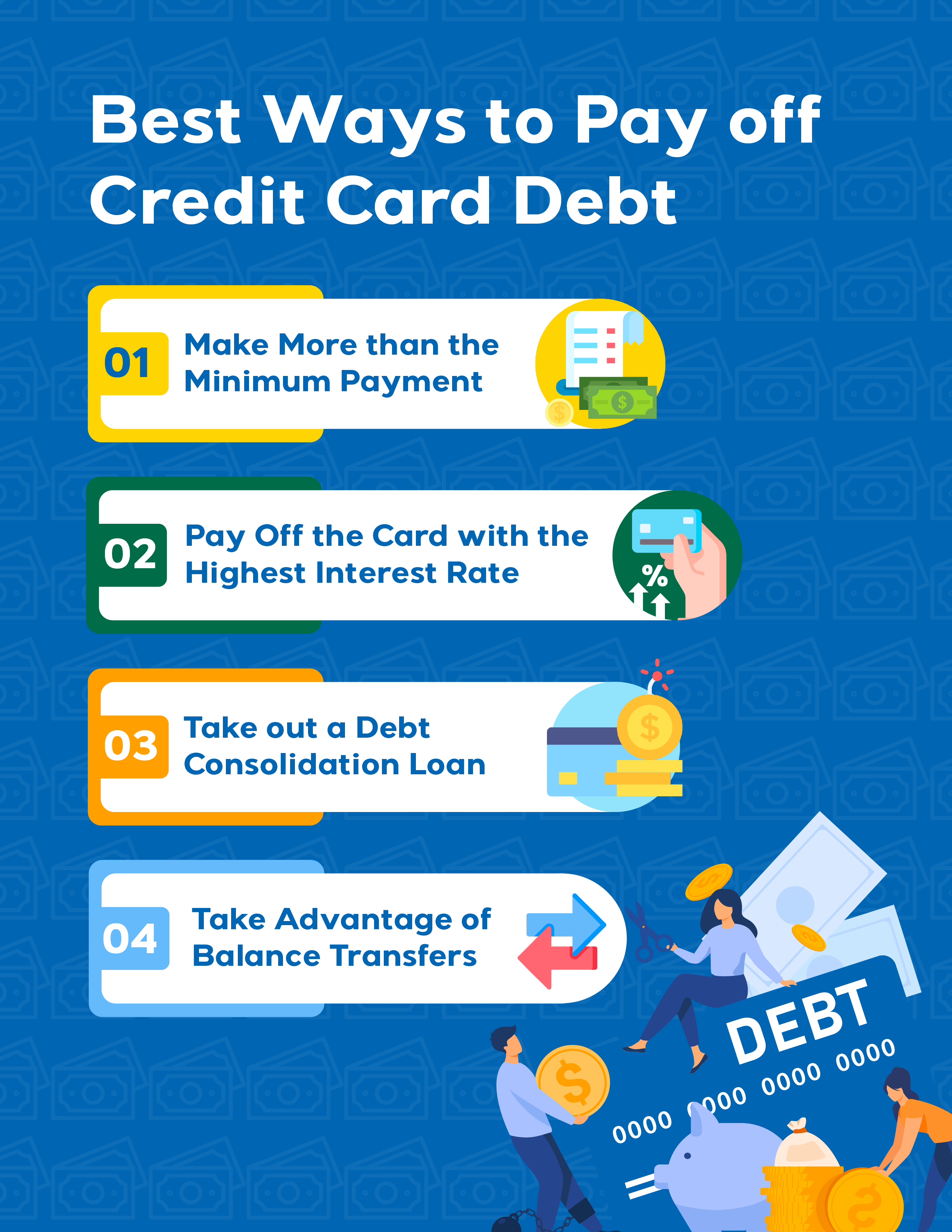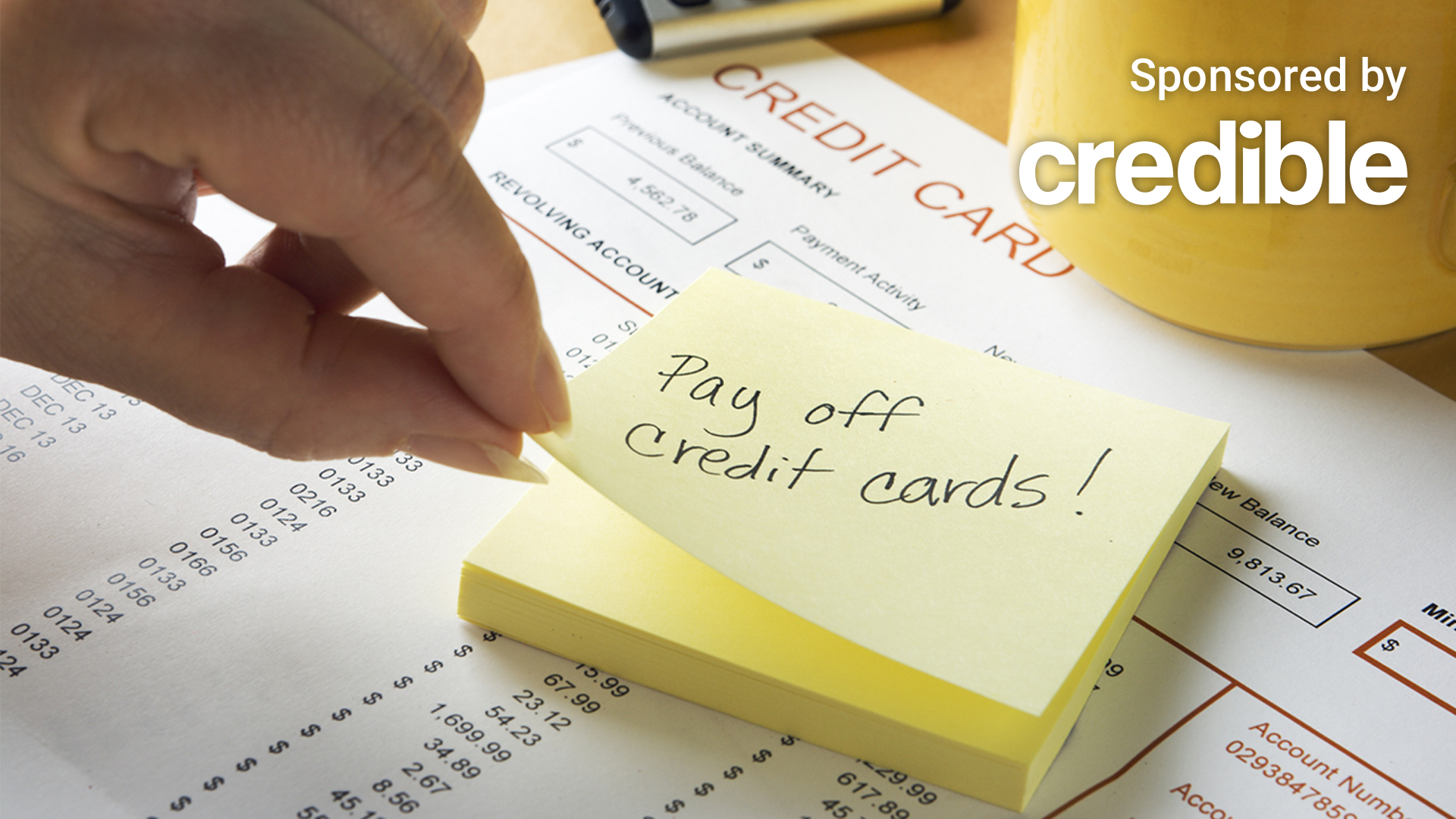For credit card debt, the best options include balance transfer, debt consolidation, negotiation with creditors, and seeking professional help. Are you struggling with credit card debt and looking for the best options to get out of it?
Managing credit card debt can be overwhelming and stressful, but there are several viable solutions to help you regain control of your finances. We will explore the top options that can effectively address your credit card debt concerns. These options include balance transfer, debt consolidation, negotiation with creditors, and seeking professional help.
By taking advantage of these strategies, you can take proactive steps towards becoming debt-free and achieving financial stability. Let’s delve into each option and find the one that best suits your needs.

Credit: www.palisadesfcu.org
Table of Contents
1. Credit Card Debt Consolidation
Are you drowning in credit card debt and looking for the best options to get back on track financially? If so, credit card debt consolidation can be an excellent choice. Debt consolidation allows you to combine multiple high-interest credit card balances into one manageable payment, potentially saving you money on interest charges and helping you pay off your debt faster.
1.1 Balance Transfer
A balance transfer is a popular method of credit card debt consolidation. It involves transferring your outstanding balances from high-interest credit cards to a new credit card with a lower interest rate. This option enables you to consolidate your debts into one card, making it easier to keep track of your payments and reducing the amount of interest you pay.
To take advantage of a balance transfer, look for credit cards that offer a low or 0% introductory APR on balance transfers. This way, you can save money on interest charges during the promotional period, allowing you to make significant progress in paying off your debt. However, keep in mind that after the introductory period, the interest rate may increase, so it’s essential to have a plan in place to pay off your balance during this time.
1.2 Personal Loan
Another option for credit card debt consolidation is taking out a personal loan. With a personal loan, you can borrow a lump sum of money to pay off your credit card balances. This allows you to consolidate your debt into one loan, making it easier to manage and potentially lowering your interest rate.
When considering a personal loan for debt consolidation, compare interest rates and loan terms from different lenders to find the best option for your situation. Look for a loan with a reasonable interest rate and monthly payment that fits within your budget. By securing a lower interest rate through a personal loan, you may be able to save money on interest charges and pay off your debt more quickly.
Remember, credit card debt consolidation is not a magic solution, but it can help you simplify your finances, reduce your interest payments, and become debt-free faster. It’s essential to have a solid repayment plan in place and be disciplined with your spending to make the most of these debt consolidation options.

Credit: www.usatoday.com
2. Debt Repayment Strategies
When it comes to paying off your credit card debt, having a well-thought-out repayment strategy is crucial. Implementing the right strategy can help you stay disciplined, manage your debt effectively, and ultimately become debt-free. In this section, we will discuss two popular debt repayment strategies: the Snowball Method and the Avalanche Method.
2.1 Snowball Method
The Snowball Method is a debt repayment strategy that focuses on paying off your smallest debts first. Here’s how it works:
- List all your credit card debts from smallest to largest, regardless of interest rates.
- Make minimum payments on all your debts every month.
- Allocate any extra money you have towards paying off the smallest debt.
- Once the smallest debt is paid off, move on to the next smallest debt and repeat the process.
- Continue this snowball effect until all your debts are paid off.
The Snowball Method is effective because it provides a sense of accomplishment when you clear your smaller debts. This motivation can keep you focused and motivated to tackle your larger debts. While the Snowball Method may result in paying more interest in the long run, the psychological benefits can make it a worthwhile strategy for many.
2.2 Avalanche Method
The Avalanche Method, on the other hand, prioritizes paying off debts with the highest interest rates first. Here’s how it works:
- List all your credit card debts from highest to lowest interest rates.
- Make minimum payments on all your debts every month.
- Allocate any extra money towards paying off the debt with the highest interest rate.
- Once the debt with the highest interest rate is paid off, move on to the next one with the next highest interest rate.
- Continue this method until all your debts are paid off.
The Avalanche Method can save you more money on interest payments compared to the Snowball Method. By eliminating debts with higher interest rates first, you reduce the overall interest charges you’ll incur. Although it may take longer to pay off your smaller debts, this method can be financially beneficial in the long run.
3. Credit Counseling
Get the best options for credit card debt with credit counseling. Find expert guidance on managing your finances and improving your credit score, tailored to your specific needs. Say goodbye to debt and hello to financial freedom.
If you find yourself overwhelmed by credit card debt, credit counseling may be a viable option for you. This form of debt relief involves seeking assistance from a qualified credit counselor who can help you develop a plan to manage and eliminate your debt. Through a systematic process of financial assessment and debt management plans, credit counseling can provide you with the guidance you need to regain control of your financial situation.3.1 Financial Assessment
Before embarking on a debt management plan, a comprehensive financial assessment is conducted by the credit counselor. This assessment helps to determine your current financial situation, including your income, expenses, and debt obligations. The counselor will analyze your financial data to identify areas where you can cut back on expenses and develop a realistic budget to meet your needs. Through this process, the counselor gains a complete understanding of your financial picture, enabling them to provide tailored guidance and recommendations. During the financial assessment, it’s important to be completely transparent and provide accurate information about your finances. This will ensure that the credit counselor has all the necessary details to create an effective debt management plan.3.2 Debt Management Plan
A debt management plan is a key component of credit counseling. It is a personalized strategy developed by the credit counselor to help you pay off your credit card debt in a manageable and efficient manner. This plan typically involves negotiating with your creditors to reduce interest rates, eliminate late fees, and create a structured repayment schedule that aligns with your budget. One of the primary benefits of a debt management plan is that it consolidates your monthly payments into a single payment. This simplifies your financial obligations and makes it easier to stay on top of your debts. Moreover, with the guidance of a credit counselor, you can learn effective money management skills that will help you avoid future debt problems. It’s important to note that a debt management plan requires discipline and commitment to stick to the agreed-upon payment schedule. By adhering to the plan, you can gradually reduce your credit card debt, improve your credit score, and ultimately achieve financial freedom. In conclusion, credit counseling offers an effective way to tackle credit card debt. Through a thorough financial assessment and the development of a debt management plan, you can regain control of your finances and work towards a debt-free future. By partnering with a reputable credit counseling agency, you can receive the guidance and support needed to navigate the complexities of debt relief.4. Bankruptcy As A Last Resort
While exploring options to deal with your credit card debt, bankruptcy should always be considered as a last resort. It is important to exhaust all other alternatives before turning to this drastic measure. Bankruptcy can have serious long-term consequences on your credit score and financial future. However, in certain cases, it can provide a fresh start and relief from overwhelming debt. If you have reached a point where bankruptcy seems inevitable, it is crucial to understand the different types available and the potential impact they may have on your situation.
4.1 Chapter 7 Bankruptcy
Chapter 7 bankruptcy, also referred to as “liquidation bankruptcy,” is the most common type of bankruptcy filed by individuals. This option aims to give debtors a clean slate by liquidating their non-exempt assets to pay off their creditors. With Chapter 7, you may be able to eliminate most, if not all, of your unsecured debts like credit card debt, medical bills, and personal loans.
Here are a few key points to consider:
- Chapter 7 bankruptcy is typically a quicker process, often lasting around three to six months.
- It may be subject to a means test to determine if you qualify based on your income.
- You may be able to keep certain assets, known as exempt assets, such as necessary clothing and household items.
- Non-exempt assets, including valuable property and luxury items, may be sold to repay creditors.
4.2 Chapter 13 Bankruptcy
Chapter 13 bankruptcy, also known as “reorganization bankruptcy,” offers an alternative solution for individuals who have a regular income and want to repay their debts over time. Unlike Chapter 7, Chapter 13 does not involve liquidating assets. Instead, it allows debtors to create a repayment plan to pay back their creditors over a specific period, usually between three and five years.
Consider the following aspects of Chapter 13 bankruptcy:
- Chapter 13 bankruptcy requires you to have a steady income to develop a debt repayment plan.
- Your repayment plan will be based on your disposable income, considering your reasonable living expenses.
- While it may take longer than Chapter 7 bankruptcy, Chapter 13 allows you to retain your assets and catch up on missed mortgage or car payments.
- Once you complete your repayment plan, any remaining eligible debts are typically discharged.
It’s worth noting that bankruptcy laws vary by country and state. Consulting with an experienced bankruptcy attorney can help you navigate the complexities of the legal process and determine the best course of action for your specific situation.

Credit: www.foxbusiness.com
Frequently Asked Questions On Best Options For Credit Card Debt
What Is The Most Effective Way To Manage Credit Card Debt?
To effectively manage credit card debt, create a detailed budget, prioritize high-interest debts, and make regular payments. Cut unnecessary expenses and consider consolidation or balance transfer options. Communication with creditors is key, so negotiate lower interest rates or ask for a payment plan to reduce your debt.
Which Option Makes It Easier To Get Out Of Credit Card Debt?
Paying off high-interest credit card debt.
How Do I Get Rid Of $30 K In Credit Card Debt?
To eliminate $30K in credit card debt, consider these steps: 1. Create a budget to track expenses and prioritize debt payments. 2. Cut down on non-essential spending to free up extra funds. 3. Negotiate with credit card companies for lower interest rates or payment plans.
4. Explore debt consolidation options like personal loans or balance transfers. 5. Consider credit counseling or debt settlement programs if necessary. Stay determined and consistent in your efforts to become debt-free.
Does Consolidating Debt Hurt Your Credit?
Consolidating debt can initially impact your credit, but in the long run, it may actually improve it. This is because it shows that you’re taking steps to manage your debt responsibly. However, it’s crucial to make your payments on time and avoid taking on new debt to maintain a positive credit score.
Conclusion
To effectively manage credit card debt, it’s crucial to explore the best options available. By considering strategies such as balance transfers, debt consolidation loans, and professional debt counseling, individuals can regain control over their finances. It’s important to remember that each option has its own pros and cons, so careful evaluation and planning are essential.
Ultimately, taking proactive steps towards reducing credit card debt will lead to financial stability and peace of mind.
